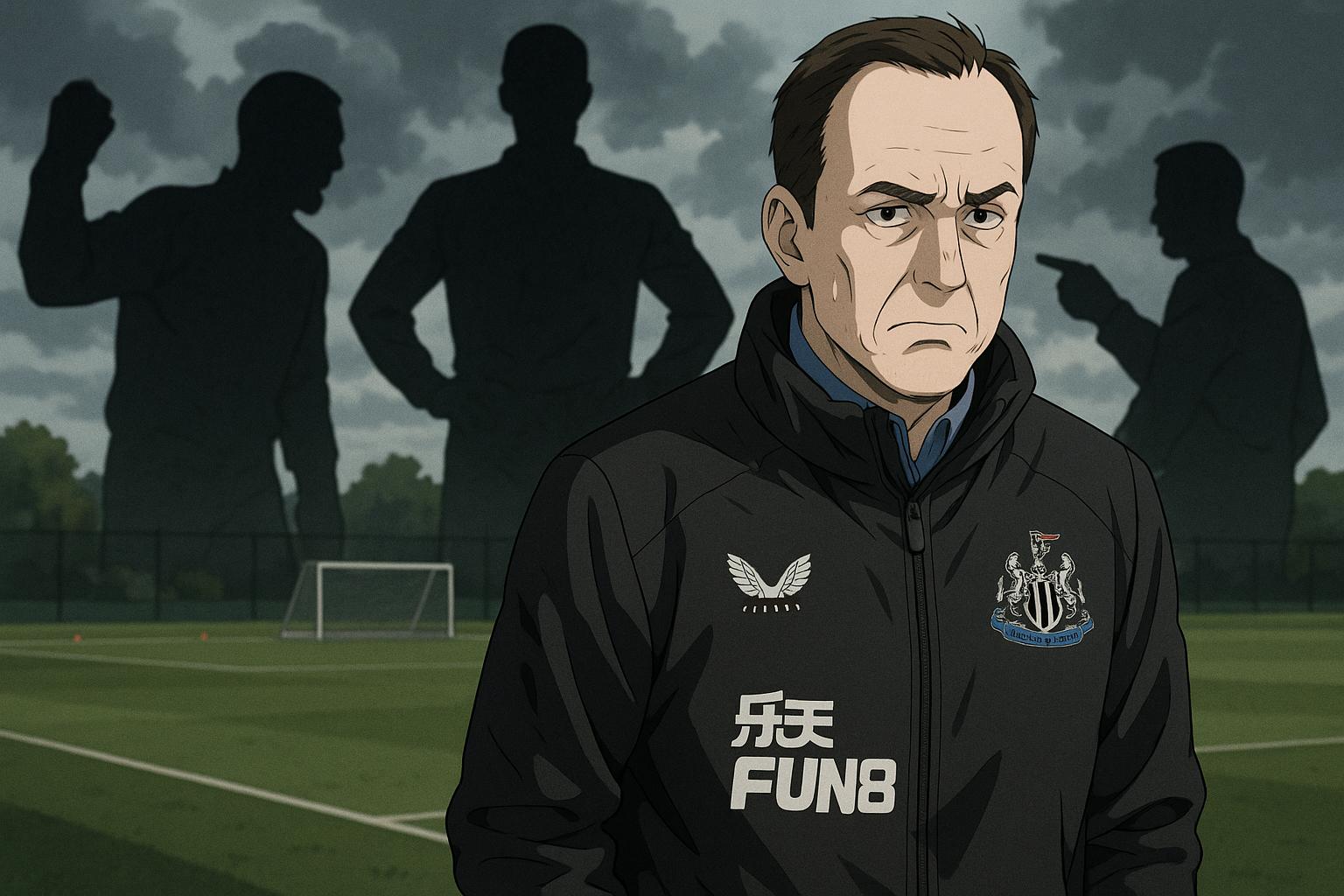If Newcastle United fans hoped that the appointment of Paul Mitchell as sporting director would herald a new era of collaboration and strategic prowess, the reality proved startlingly different. Just days into his tenure on Tyneside, it was apparent that his abrasive style and controversial comments would spark discontent amongst players and staff alike, ultimately leading to his departure less than a year later.
Mitchell's initial addresses to the Newcastle squad reportedly fell flat. Expectations were that his expertise would enhance the club’s performance, but instead, he created a palpable tension. The dissatisfaction was so profound that many insiders suspected he had aspirations for another managerial candidate, specifically Mauricio Pochettino, whom he had previously worked with at Tottenham. Instead of rallying support for Eddie Howe, the head coach who had already achieved a remarkable turnaround for the club—taking it from relegation battles to a Champions League spot—Mitchell’s comments seemed to undermine that progress.
He described the club’s transfer strategy as “not fit for purpose,” which sparked outrage and was viewed as both unnecessary and detrimental to team unity. Former recruitment staff and fans expressed resentment, feeling that Mitchell’s critique belittled the efforts of those who had laid the groundwork for the club's resurgence. In this respect, it seems that rather than joining a team on a journey, he was more interested in charting a new course with little regard for existing achievements or relationships. It was later revealed that those in the training ground felt they were on “eggshells” during this challenging period, with many questioning why such friction was allowed to develop in the first place.
Mitchell's perceived lack of self-awareness was highlighted during a far-reaching media briefing where he reiterated his views on the club's transfers. His comments, while grounded in a desire for modernisation, went over poorly, leading to a significant decline in morale. Although there were hints of some insightful analysis—his suggestion for a smarter recruitment strategy for the post-Financial Fair Play world was noted—his unilateral approach created division rather than collaboration.
The relationship between Mitchell and Howe deteriorated to such an extent that there were fears it could jeopardise the head coach’s position. By not valuing the contributions of those around him, Mitchell risked alienating not just Howe but an entire support network crucial for club success. Even as he communicated a need for a more dynamic approach, his failure to forge effective relationships left the club with significant internal strife.
In mid-season, the harmony of the training ground shifted dramatically, which was baffling to many considering the established success that had already been attained. Despite a rocky start, Howe had focused himself on winning trophies and maintaining league position, thus sidelining the factional conflict driven by Mitchell’s comments. Under Howe's guidance, the team managed 19 wins out of 24 games during a critical period, demonstrating resilience in the face of adversity.
Ultimately, the announcement of Mitchell's exit from Newcastle was not entirely surprising, given the context. It stemmed from a mutual decision; however, the timing raised eyebrows, especially with the summer transfer window approaching. Many insiders speculated that it might be better for the club to acknowledge early misjudgements rather than scramble for solutions when it was already too late.
While Mitchell's potential to succeed as a sporting director elsewhere should not be dismissed, his brief time at Newcastle provides a poignant lesson in humility and the importance of understanding one's role within a larger system. Success in football, as in life, often hinges less on individual brilliance and more on the ability to collaborate and respect the contributions of others. The Newcastle saga illustrates just how critical these attributes are in fostering an environment conducive to sustained achievement.
Reference Map:
- Paragraph 1 – [1], [2]
- Paragraph 2 – [1], [3], [5]
- Paragraph 3 – [2], [4], [6]
- Paragraph 4 – [1], [2], [3]
- Paragraph 5 – [1], [3], [7]
- Paragraph 6 – [1], [2], [4]
- Paragraph 7 – [1], [6]
- Paragraph 8 – [1], [2], [4]
- Paragraph 9 – [1], [2], [6]
Source: Noah Wire Services
